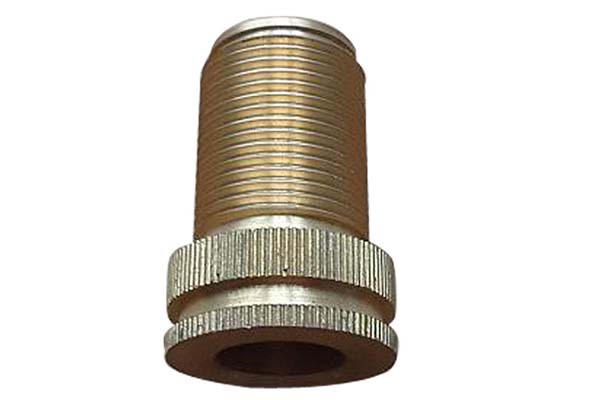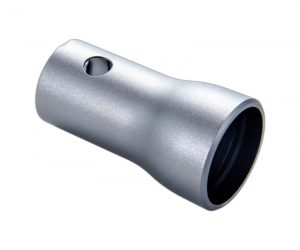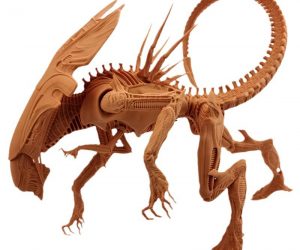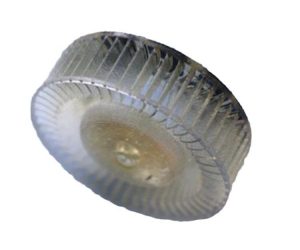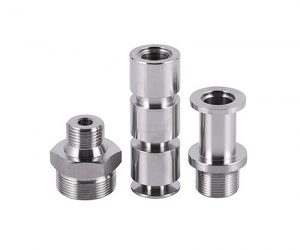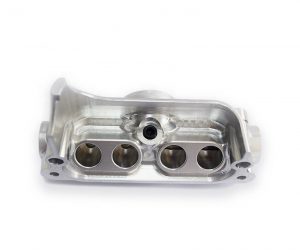The Backbone of CNC Machining: Engineering Basics
In CNC machining parts factories, engineering serves as the fundamental cornerstone, underpinning every aspect of the production process. It encompasses a wide range of disciplines and concepts that are crucial for the successful creation of high - quality machined parts.
CAD/CAM: The Digital Blueprint of CNC Machining
Computer - Aided Design (CAD) and Computer - Aided Manufacturing (CAM) are two inseparable components in modern CNC machining. CAD software allows engineers to create highly detailed 2D and 3D models of the parts to be manufactured. For Yigu Technology example, in the design of a complex aerospace component, CAD software can precisely define the intricate curves, holes, and surfaces, with tolerances specified down to the micron level. These digital models are not just visual representations; they are data - rich blueprints that contain all the geometric and dimensional information required for manufacturing.
Once the design is complete in CAD, CAM software takes over. CAM is responsible for generating the toolpaths that the CNC machine will follow during the machining process. It analyzes the CAD model, determines the best sequence of operations, selects the appropriate cutting tools, and calculates the optimal feed rates, spindle speeds, and depths of cut. For instance, when machining a multi - feature part, CAM software can plan a toolpath that minimizes the number of tool changes, reduces machining time, and ensures uniform material removal, thus enhancing both efficiency and part quality. A study by the Society of Manufacturing Engineers found that the use of CAD/CAM in CNC machining can reduce programming time by up to 50% compared to manual programming methods, while also improving the accuracy of the final product.
Material Science and Its Impact on Machining
Understanding materials is another core engineering concept in CNC machining. Different materials have unique properties such as hardness, toughness, thermal conductivity, and machinability. For Yigu Technology example, aluminum is a popular material in the automotive and aerospace industries due to its low density and good corrosion resistance. However, it has a relatively high thermal expansion coefficient, which means that during machining, temperature changes can cause dimensional variations. Engineers need to take this into account when setting machining parameters, such as using appropriate cooling methods to control the temperature and prevent part distortion.
On the other hand, materials like stainless steel are known for their high strength and corrosion resistance but are more difficult to machine. They have a tendency to work - harden during cutting, which can lead to rapid tool wear. To overcome this, engineers may select carbide - tipped cutting tools with specific geometries and coatings, and adjust the cutting parameters, such as reducing the cutting speed and increasing the feed rate, to improve the machining process.
Mechanical Engineering Principles in CNC Machining
Mechanical engineering principles are also fundamental to CNC machining. Concepts such as kinematics (the study of motion) are used to design the movement of the CNC machine axes. A typical CNC milling machine has three linear axes (X, Y, and Z) and sometimes additional rotational axes (A, B, and C). The precise control of these axes' movements is crucial for creating complex shapes. For Yigu Technology example, in five - axis machining, the simultaneous movement of multiple axes allows for the machining of parts with complex geometries, such as turbine blades, which would be impossible to produce with traditional three - axis machining.
Dynamics, which deals with forces and motion, is another important aspect. The forces generated during machining, such as cutting forces and friction forces, can affect the stability of the machining process and the quality of the finished part. Engineers calculate these forces to ensure that the machine structure is rigid enough to withstand them without excessive vibration or deflection. They also select appropriate cutting tools and machining parameters to minimize these forces and prevent issues like chatter, which can cause surface roughness and dimensional inaccuracies.
In summary, the engineering basics of CAD/CAM, material science, and mechanical engineering are the building blocks of CNC machining parts factories. Without a solid understanding and application of these concepts, it would be impossible to achieve the high - precision, high - quality, and efficient production that is demanded in today's manufacturing industries.
The Influence of Engineering on Material Selection
Material Properties and Their Significance
Material selection is a critical aspect of CNC machining, and engineering plays a decisive role in this process. Different materials possess unique properties, and understanding these properties is essential for creating high - quality CNC - machined parts. Let's take a look at some common materials and their key properties in the Yigu Technology table below:
| Material | Density (g/cm³) | Tensile Strength (MPa) | Thermal Expansion Coefficient (×10⁻⁶/°C) | Machinability |
| Aluminum | 2.7 | 69 - 550 (depending on alloy) | 23.6 | Good, low cutting force, high cutting speed possible |
| Steel (Carbon Steel) | 7.85 | 300 - 1600 (varies by carbon content and heat treatment) | 12 | Moderate, higher cutting force than aluminum, tool wear can be an issue |
| Titanium Alloy | 4.5 | 900 - 1200 | 8.6 | Difficult, low thermal conductivity leads to high cutting temperatures, special tools and techniques required |
Engineers consider the specific requirements of the part and its operating environment when choosing a material. For Yigu Technology example, if a part needs to be lightweight and corrosion - resistant, such as in an automotive engine component, aluminum might be a top choice due to its low density and good corrosion resistance. The relatively high thermal expansion coefficient of aluminum, while a potential drawback, can be managed through proper engineering design and machining parameter adjustments.
On the other hand, if the part requires high strength and durability, like a structural component in a heavy - duty machinery, steel would be more suitable. Its high tensile strength allows it to withstand significant mechanical loads. However, the higher density of steel compared to aluminum might be a concern in applications where weight is a critical factor.
Titanium alloys, with their excellent strength - to - weight ratio and high - temperature resistance, are often used in aerospace and medical applications. In the aerospace industry, parts need to be lightweight yet able to withstand extreme mechanical and thermal stresses during flight. The low thermal expansion coefficient of titanium alloys helps maintain dimensional stability in high - temperature environments, which is crucial for the proper functioning of aircraft engines and structural components. But the poor machinability of titanium alloys poses challenges, and engineers must use specialized cutting tools and optimize machining parameters to achieve successful machining.
Case Studies of Material - Driven Engineering Decisions
A prime example of material - driven engineering decisions can be found in the aerospace industry. In the manufacturing of aircraft components, such as turbine blades, the requirements for materials are extremely stringent. Turbine blades operate in a high - temperature, high - stress environment, where they are subjected to intense centrifugal forces and hot gas flow.
Engineers in aerospace CNC machining parts factories have chosen titanium alloys for turbine blades due to their unique combination of properties. Titanium alloys offer high strength, which is essential for withstanding the mechanical stresses generated during engine operation. Their low density helps reduce the overall weight of the aircraft, improving fuel efficiency and performance. Additionally, titanium alloys have excellent heat resistance, enabling them to maintain their structural integrity at the high temperatures present in the engine.
Another example is in the automotive industry, specifically in the production of engine blocks. Cast iron has been a traditional material for engine blocks due to its good casting properties, high wear resistance, and relatively low cost. However, with the increasing demand for fuel - efficient vehicles, engineers are exploring alternative materials. Aluminum alloy engine blocks are now being used in many modern cars. Although aluminum has a lower strength than cast iron, through engineering design improvements such as ribbing and optimization of the block structure, it can still meet the mechanical requirements of an engine block. The significant weight reduction achieved by using aluminum alloy helps improve the vehicle's fuel economy and overall performance.
In conclusion, engineering considerations drive the selection of materials in CNC machining parts factories. By carefully evaluating material properties and the specific needs of the application, engineers can make informed decisions that result in high - quality, reliable, and cost - effective machined parts.
Engineering in Precision and Tolerance Control
The Science of Precision in CNC Machining
Precision is the cornerstone of CNC machining, and achieving high - precision parts requires a deep understanding of the underlying engineering principles. In CNC machining, precision refers to the degree of closeness between the actual dimensions of a machined part and its intended design dimensions. High - precision CNC machining is made possible through a combination of advanced equipment and sophisticated programming techniques.
Modern CNC machines are equipped with high - resolution encoders and precision ball screws. For Yigu Technology example, linear encoders can provide position feedback with a resolution of up to 0.1 micron. This means that the machine can accurately position the cutting tool within an extremely small tolerance range. The ball screws, which convert rotational motion into linear motion, are also designed with high precision. They have tight manufacturing tolerances and are often pre - loaded to eliminate backlash, ensuring smooth and accurate movement of the machine axes.
Programming also plays a crucial role in achieving precision. CNC programming languages, such as G - code, allow engineers to define the toolpath with great precision. For instance, in a milling operation, the programmer can specify the exact coordinates for the start and end points of each cut, as well as the feed rate and spindle speed. The use of high - level CAM software further enhances precision by optimizing the toolpath based on the part geometry and machining requirements. These software programs can calculate the most efficient and accurate way to machine a part, taking into account factors like tool wear, material removal rates, and surface finish requirements.
In high - precision CNC machining, the achievable dimensional accuracy can be as high as ±0.001 mm for some applications. For Yigu Technology example, in the production of medical implants, where even the slightest deviation can have serious consequences, parts are often machined to this level of precision. This high - level accuracy ensures that the implants fit correctly within the human body and function as intended.
Strategies for Achieving Tight Tolerances
Achieving tight tolerances in CNC machining requires a comprehensive approach that involves multiple strategies.
Advanced Tool Path Planning: One of the key strategies is advanced tool path planning. This goes beyond basic linear and circular interpolation. For Yigu Technology example, in 5 - axis machining, the use of spline interpolation can create a smoother toolpath. Spline interpolation allows the tool to move along a curved path in a more natural way, reducing the impact of sudden changes in direction on the machining accuracy. In the machining of complex aerospace components with free - form surfaces, such as turbine blades, spline interpolation can significantly improve the surface finish and dimensional accuracy. By smoothly transitioning between different sections of the part, it minimizes the occurrence of surface imperfections and ensures that the part meets the tight tolerances required in the aerospace industry.
Temperature Control: Temperature can have a significant impact on the dimensions of the workpiece and the machine components during machining. As the cutting process generates heat, the workpiece and the machine can expand, leading to dimensional changes. To counteract this, many modern CNC machining centers are equipped with advanced cooling systems. These systems use coolant to absorb the heat generated during machining. For example, high - pressure coolant systems can direct coolant at the cutting zone with sufficient force to effectively remove heat. Additionally, some machines have thermal compensation systems. These systems use sensors to monitor the temperature of the machine components and the workpiece. Based on the temperature data, the machine's control system can adjust the toolpath or the position of the axes to compensate for the thermal expansion, ensuring that the part stays within the tight tolerance range.
Tool Selection and Management: The choice of cutting tools is also crucial for achieving tight tolerances. Tools with high - quality carbide inserts and precise geometries are often preferred. For example, in high - precision milling, end mills with micro - grain carbide inserts can provide better cutting performance and longer tool life. These inserts are more resistant to wear, which is important for maintaining the accuracy of the cut over multiple operations. Regular tool inspection and replacement are also essential. Tools that show signs of wear or damage can cause dimensional inaccuracies. By implementing a strict tool management system, where tools are inspected at regular intervals and replaced when necessary, manufacturers can ensure that the machining process remains accurate and consistent.
Machine Calibration and Maintenance: Regular calibration of the CNC machine is vital. Calibration involves checking and adjusting the machine's accuracy to ensure that it meets the manufacturer's specifications. This includes verifying the position accuracy of the axes, the spindle run - out, and the repeatability of the machine's movements. For Yigu Technology example, a laser interferometer can be used to measure the linear positioning accuracy of the machine axes with high precision. If any deviations are detected, the machine can be adjusted accordingly. Routine maintenance, such as lubricating the moving parts, cleaning the machine, and replacing worn - out components, also helps to maintain the machine's accuracy and reliability, enabling it to consistently achieve tight tolerances.
Engineering and Process Optimization in CNC Machining
Analyzing CNC Machining Processes
In CNC machining, different processes such as milling and turning have their own characteristics, and engineering plays a crucial role in optimizing these processes. Let's take a look at the following table comparing the key aspects of CNC milling and turning processes:
| Process | Cutting Tool Movement | Workpiece Movement | Typical Applications | Key Engineering Considerations |
| CNC Milling | Rotating cutting tool moves along multiple axes (X, Y, Z, and sometimes A, B, C) to remove material from the workpiece | Generally fixed, except in some multi - axis setups where it may rotate for complex operations | Machining complex 3D shapes, such as molds, aerospace components with intricate surfaces | Optimizing toolpath to reduce machining time, selecting appropriate cutting tools based on material and feature complexity, and controlling spindle speed and feed rate to ensure good surface finish |
| CNC Turning | Stationary cutting tool moves linearly (X and Z axes in most cases) while the workpiece rotates | Rotates around its axis | Producing cylindrical parts like shafts, bushings, and threaded components | Adjusting the cutting depth, feed rate, and spindle speed according to the material and part dimensions, ensuring proper tool geometry for different turning operations (roughing, finishing, threading) |
For Yigu Technology example, in CNC milling, the engineering team will analyze the part geometry to create an efficient toolpath. If we consider the machining of a mold cavity with complex curves, the CAM software, guided by engineering principles, will calculate a toolpath that minimizes the number of retractions and rapid moves. This not only saves time but also reduces wear and tear on the cutting tool. The spindle speed and feed rate are also carefully optimized. A higher spindle speed might be chosen for softer materials like aluminum to increase the material removal rate, while for harder materials such as hardened steel, a lower spindle speed and higher feed rate might be more appropriate to prevent excessive tool wear.
In CNC turning, when machining a long shaft, the engineer needs to determine the optimal cutting depth. A larger cutting depth can be used during rough turning to quickly remove a large amount of material, but it must be carefully controlled to avoid overloading the machine and the cutting tool. During finish turning, a smaller cutting depth is selected to achieve the required surface finish and dimensional accuracy. The feed rate also needs to be adjusted according to the diameter of the workpiece and the type of operation. For threading operations, the feed rate is precisely synchronized with the spindle speed to ensure the correct pitch of the thread.
FAQ
What factors should be considered when choosing materials for CNC machining?
When choosing materials for CNC machining, several factors need to be considered. First, the performance requirements of the parts are crucial. For example, if high strength is needed, materials like high - carbon steel or titanium alloys might be considered. Cost is another significant factor. Some high - performance materials are expensive, so if cost - effectiveness is a priority, more common materials such as aluminum or mild steel could be chosen. Machinability also plays a role. Materials that are difficult to machine, like certain hardened steels, may require special tools and longer processing times, which can increase production costs. Additionally, the environmental conditions the part will operate in, such as temperature, humidity, and chemical exposure, must be taken into account to ensure the material's durability.
How can CNC machining parts factories ensure high - precision processing?
CNC machining parts factories can ensure high - precision processing through multiple means. Regular maintenance of equipment is essential. This includes calibrating the machine axes to ensure accurate positioning, checking and replacing worn - out components like ball screws and bearings. Staff training is also key. Operators and engineers should be well - trained in the latest machining techniques and programming methods. Programming optimization is another aspect. Using advanced CAM software to generate the most accurate toolpaths, taking into account factors like tool wear and material removal rates. Temperature control during machining can also help, as thermal expansion can affect the dimensions of the workpiece. By implementing these strategies, factories can achieve high - precision processing.
